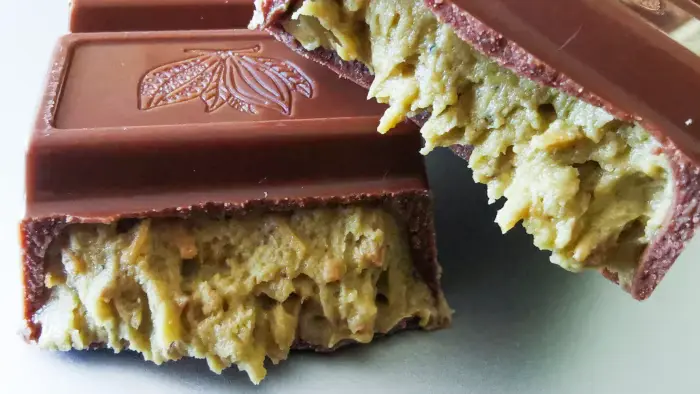What does a sweet treat and social media have in common?
They’re both adored by audiences worldwide.
But what happens when a key
ingredient becomes scarce due to viral hype? That’s exactly what unfolded in
this fascinating case of chocolate, TikTok, and pistachios.
The Birth of a Viral Dessert
The couple’s signature creation, a chocolate bar named “Can’t Get Knafeh of It”, quickly gained popularity. The bar blends chocolate, pistachios, kataifi (a shredded pastry), and tahini to deliver a rich, velvety flavor experience. Its uniqueness and indulgent taste set the stage for viral fame.

The TikTok Explosion
In December 2023, Ukrainian food influencer Maria Vehera posted a TikTok video of herself enjoying the Fix chocolate bar in her car, ASMR-style. The video exploded, garnering over 124.5 million views and 6.8 million likes.
Her content sparked a chain reaction. Influencers like Marjanne Suarez and others followed suit, helping the Dubai chocolate trend dominate TikTok. Soon, other chocolate makers and supermarkets began releasing their own versions of the bar, seeking to capitalize on the craze.
The Pistachio Shortage Begins
With the viral success came soaring demand - not just for the chocolate, but for one of its key ingredients: pistachios. As more brands jumped on the trend, the supply of pistachios dwindled and prices surged.

According to the Financial Times, the price of pistachios reached approximately $7.65 per pound in the previous year. At the same time, the price of the Dubai chocolate bar increased to around $10.30 per pound. Supermarkets like Lidl, Marks & Spencer, and even major producers like Nestlé began offering pistachio-infused versions, intensifying the strain on supply.
Why Pistachios Are Hard to Replace
Pistachios are not easy to grow. As per Sunnyland Farms, pistachio trees can reach 20 to 30 feet tall and take 7 to 8 years to produce viable seeds. They require specific climate conditions—long, hot summers and cold, non-freezing winters, and need precise fertilization, irrigation, and disease control.
The mass production is complicated by the risk of climatevariability, contamination, and plant disease. Successful cultivation demands disease-free nursery stock and careful storage of harvested nuts.
Globally, pistachios are grown in countries like the United States, Iran, Turkey, and Syria but even these sources were not enough to keep up with the viral demand.
Conclusion
In my opinion, the TikTok-fueled Dubai chocolate trend directly contributed to a global pistachio shortage. Social media influencers and mass marketing amplified the popularity of the chocolate bar to such an extent that demand for pistachios far outstripped supply.
Ultimately, a dessert’s online fame became a real-world supply chain problem. It’s a powerful example of how digital trends can ripple across industries, and even reshape global agriculture.
 Timi Ayeni,
Timi Ayeni,